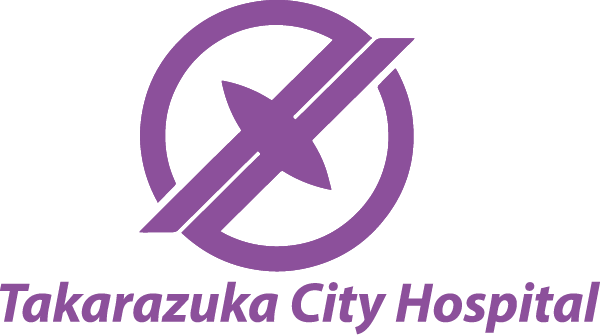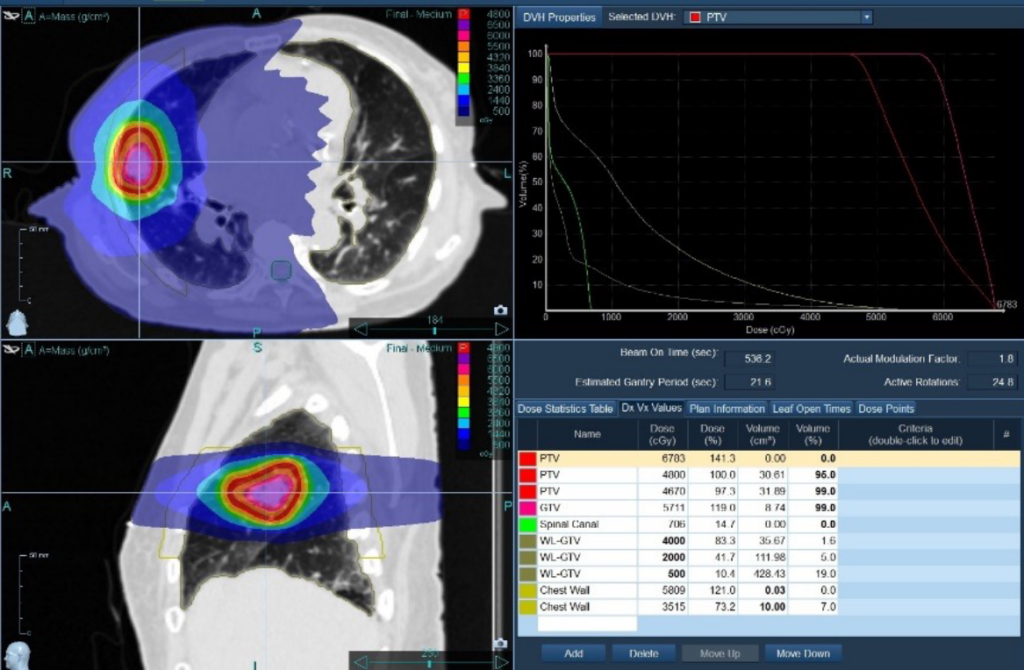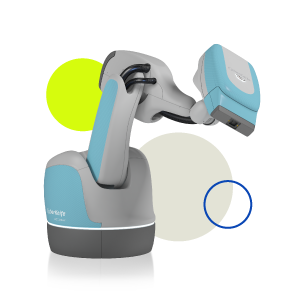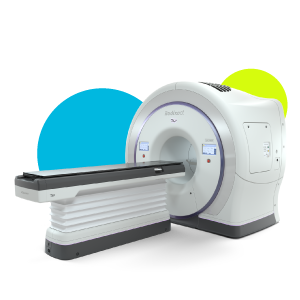CASE STUDY | TAKARAZUKA CITY HOSPITAL
Stereotactic Body Radiation Therapy using Radixact® System with Synchrony® for Nonagenarian Patient with Lung Cancer
For frail patients with early-stage non-small cell lung cancer (NSCLC), where
treatment toxicity and risk mitigation are of paramount importance, the Radixact®
System with Synchrony® Lung Tracking™ with Respiratory Modeling is a promising
approach to minimize the risk of radiation pneumonitis.
Case Challenge
Assuring minimal toxicity with lung stereotactic body radiation
therapy (SBRT) for a medically inoperable elderly patient.
Treatment Planning and Delivery:
Before treatment the patient was scanned using a CT device. The
patient was simulated supine and immobilized with a vacuum
cushion. VOLO™ planning was used to develop a TomoHelical™ plan.
“We showed that Synchrony
tracking SBRT with the Radixact System
was technically feasible even for a
patient of very advanced age.”
Treatment Rationale
A woman in her 90s, who has never smoked, had an abnormality on a chest X-ray. Further tests showed a 28 mm lung nodule that raised suspicion for lung cancer. Due to her age and health concerns, surgical resection was not possible. After careful
consideration with a tumor board, a clinical diagnosis of NSCLC
was made without histopathologic confirmation. She received
SBRT (48 Gy in 4 fractions) delivered on the Radixact® System with
Synchrony® Lung Tracking to minimize normal lung exposure and the risk of radiation pneumonitis.
Facts at-a-glance

FACILITY NAME
Takarazuka City Hospital
LOCATION
Takarazuka, Hyogo, Japan
ABOUT
SBRT using the Radixact System with
Synchrony Lung Tracking for an elderly
patient with medically inoperable
early-stage NSCLC
TREATMENT SYSTEM EXPERIENCE
Radixact Treatment Delivery System
UPGRADE TECHNOLOGY SOLUTIONS
Synchrony® Lung Tracking™ with
Respiratory Modelling
CASE MIX
Medically inoperable early-stage
NSCLC


Figure 1. Diagnostic CT and PET/CT images prior to treatment delivery

Figure 2. Screen-shot of VOLO™ treatment planning
Outcomes / Conclusions
Synchrony Lung Tracking with Respiratory Modeling reduced PTV volume from 60.7cc to 32.2cc and irradiated normal lung V20Gy from 7.8% to 5.0%. Beam-on time for the treatment delivery was approximately nine minutes. During the treatment delivery, the kV imaging system detected the lung tumor without difficulty. The threshold of potential difference, which is a statistical prediction of the 3D distance error, was set at 3.5 mm. It was possible to complete treatment without major problems, although occasionally the respiratory signal pattern changed during treatment, necessitating treatment pauses. The patient tolerated treatment well. At the 1-month follow-up visit, there were no symptoms or chest X-ray findings suggestive of radiation pneumonitis. SBRT is an established definitive treatment for inoperable or high-risk operable patients with early-stage NSCLC. For such frail patients, treatment toxicity and risk mitigation are of paramount importance. Synchrony Lung Tracking with Respiratory Modeling is a promising approach as it can enable accurate tumor targeting and a reduction in irradiated normal lung volume, minimizing the risk of radiation pneumonitis.
Important Safety Information
Most side effects of radiotherapy, including radiotherapy delivered with Accuray systems, are mild and temporary, often involving fatigue, nausea, and skin irritation. Side effects can be severe, however, leading to pain, alterations in normal body functions (for example, urinary or salivary function), deterioration of quality of life, permanent injury, and even death. Side effects can occur during or shortly after radiation treatment or in the months and years following radiation. The nature and severity of side effects depend on many factors, including the size and location of the treated tumor, the treatment technique (for example, the radiation dose), and the patient’s general medical condition, to name a few. For more details about the side effects of your radiation therapy, and to see if treatment with an Accuray product is right for you, ask your doctor. Accuray Incorporated as a medical device manufacturer cannot and does not recommend specific treatment approaches. Individual results may vary.
Most side effects of radiotherapy, including radiotherapy delivered with Accuray systems, are mild and temporary, often involving fatigue, nausea, and skin irritation. Side effects can be severe, however, leading to pain, alterations in normal body functions (for example, urinary or salivary function), deterioration of quality of life, permanent injury, and even death. Side effects can occur during or shortly after radiation treatment or in the months and years following radiation. The nature and severity of side effects depend on many factors, including the size and location of the treated tumor, the treatment technique (for example, the radiation dose), and the patient’s general medical condition, to name a few. For more details about the side effects of your radiation therapy, and to see if treatment with an Accuray product is right for you, ask your doctor. Accuray Incorporated as a medical device manufacturer cannot and does not recommend specific treatment approaches. Individual results may vary.
© 2023 Accuray Incorporated. All Rights Reserved. Accuray, the Accuray logo, and other trademarks are trademarks or registered trademarks of Accuray Incorporated and may not be used without permission. For more information on Accuray and its trademarks, please visit www.accuray.com/trademarks. MKT004351





